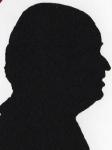Reviews by category
TVONICS Digital TV Recorder FP-250
Buy Now...


It is a black box that works equally as well horizontally or vertically (cradle provided) The face is 18x6.5cm with around 23cm of depth required for cables etc to be plugged into the back.
All the connections are on the back, there are two SCART connectors, the DC power input and an 'X' arrangement where top left is the aerial input, bottom right aerial outlet (if required) and the top right/bottom left being the externally connected pass through (RF-Loop).
Connect the aerial input and the supplied SCART lead to the port labelled TV, turn on your TV and plug in the power to the black box. Your TV should now tune to the SCART channel and display a message saying press 'OK' to tune. At this point you are searching for the remote (the two 'AA' batteries are in with the manual) press 'OK' and quite quickly it comes back with the number of channels found, neatly listed in my case as 53 TV, 27 Radio and 8 Data. Press 'OK' and you are watching the first channel.
Everything is controlled by the 48 key remote control. I find all these are designed differently but all the buttons are clearly labelled and so you should almost immediately be able to setup recording via the EPG (Electronic Program Guide) that has listings for eight days in advance. If there is anything you are unsure of the 36 page User Guide seems to be quite well written and easy to understand. There is also a 7 point setup sheet that shows what is in the box and how to connect it up.
You can use it as a Freeview box to watch whatever you like over any of the TV channels that are not encrypted, view digital Teletext either on the TV channels that show it or on the dedicated data channels. To listen to radio you need to press the DTV/Radio button on the remote and then the standard Freeview 27 radio channels are available.
For those occasions when you are not there or more than one program is worth watching at the same time the EPG allows you to quickly program with one touch from the guide. I noted during my tests that it often seemed to start late however all programs were covered in full. Unlike other such devices it starts recording when the program starts and not at the time it is advertised to start. So as an example if a program is stated to start at 19.30 but actually starts at 19.34 it starts at 19.34. It is also possible to setup 'repeat' options for programs broadcast daily or weekly. I found this model could accept up to 134 hours of recordings
If you are watching a live program and you need to answer phone, go to the loo or whatever you can pause live TV (up to two hours) and just press a single button when you return to continue watching from where you left off. With recorded programs you can (hurrah) fast forward through the advert breaks. This means a typical peak time ITV program lasting two hours can be watched in just over 95 minutes.
When you first tune into a channel you get an info bar showing details of the program being broadcast and it's length, great for channel surfing. Using other buttons on the remote give later programs or that for other channels. The remote can also be used to control other things like your TV and the DVD player provided your device is listed as one of those supported.
The picture and sound quality was fine, I must admit I found it strange not having a digital clock staring at me but that must help in getting to the lower amount of power it is stated to use. They also do two other models the DVR-150 and DVR-300 with smaller and larger hard discs.
TVONICS Digital TV Recorder FP-250 is £189.99 from the link on their website.
| add to del.icio.us | Digg this review |
| StumbleUpon | |













 !!
!!










Comment by sonseyface, 8 Apr 2011 19:22